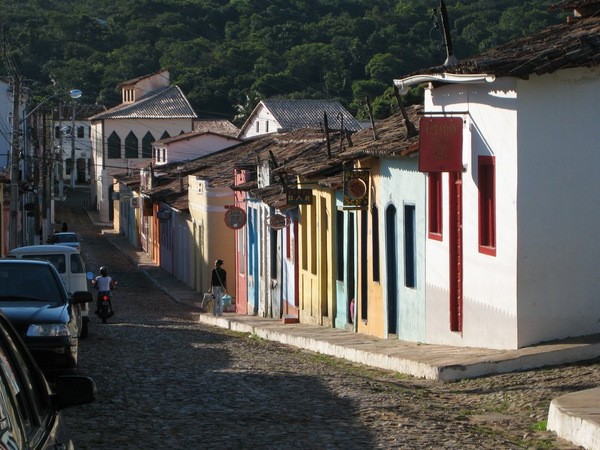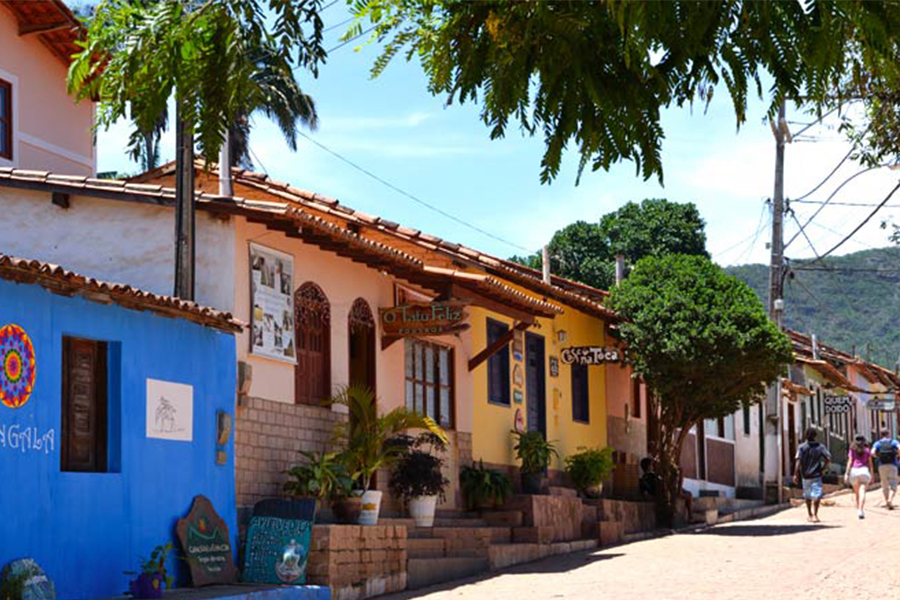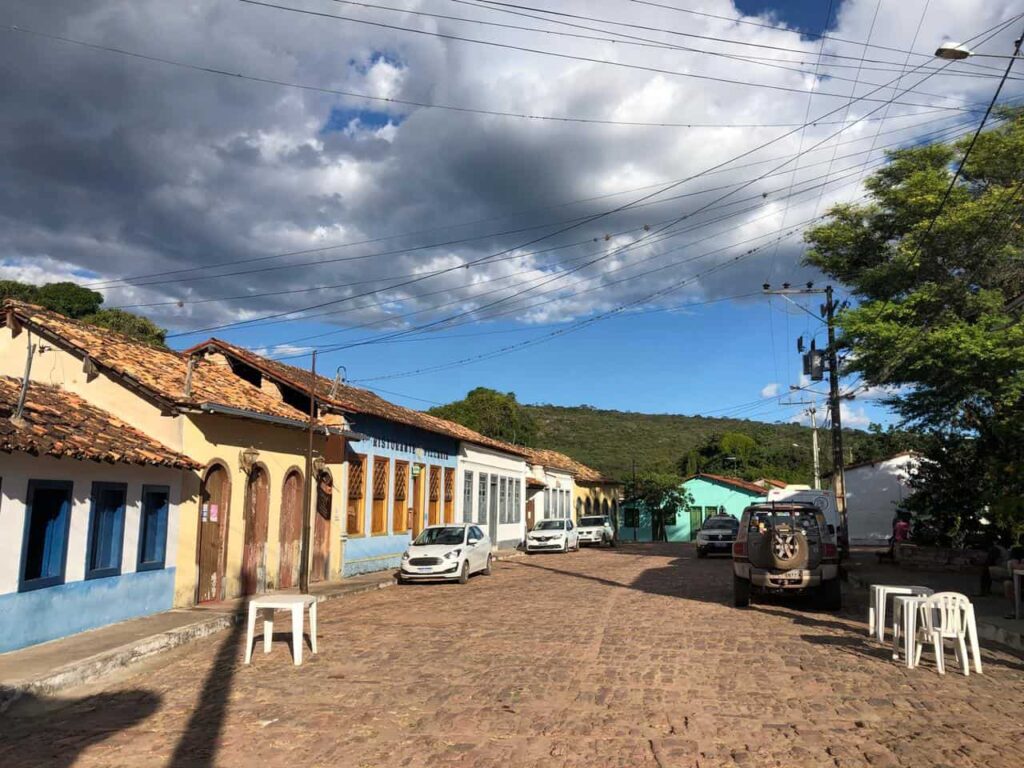Chapada Diamantina, a region in the heart of Bahia, is home to a 152,000-hectare national park that preserves hundreds of waterfalls, archaeological sites and magnificent geology.
The scenic beauty of the Chapada Diamantina National Park is enjoyed by locals and tourists alike – it is an area of vast geological formation and incredible biodiversity.

The wealth of biomes we have here is impressive. All this is combined with the architectural heritage of the towns, the stories, the adventures, the intangible riches and the many mysteries that surround our place.
Everyone is aware of the need to preserve this place, to make everyone aware of the grandeur and the ecological sanctuary that the Chapada Diamantina is.
This is due to the size of the region – there are dozens of municipalities covering almost 40,000 square kilometres – and the great distances between the main natural attractions and the tourist towns.
Video about the main towns and villages of Chapada Diamantina


Lençóis e Região na Chapada Diamantina

Cachoeiras e Trilhas do Vale do Capão ou Caeté-Açu13:32

Guia de Turismo de Andaraí na Chapada Diamantina

Ibicoara na Chapada Diamantina04:14

Igatu a “Machu Picchu” brasileira - Reportagem30:17

Andaraí e Mucugê09:42

Morro do Chapéu - 5 passeios turísticos10:33

Vila do Ventura na Chapada Diamantina08:10

Rio de Contas - Guia Turístico07:48
Main Towns and Villages in the Chapada Diamantina Region
The main towns and villages of the Chapada Diamantina, each with unique characteristics and historical importance, include
- Lençóis – Considered the tourist “capital” of the Chapada, Lençóis preserves colonial mansions and has a well-developed service structure to welcome visitors, with access to several trails and waterfalls.
- Palmeiras in Vale do Capão – The gateway to Vale do Capão, an alternative and culturally rich village, very popular with ecotourism and spirituality enthusiasts, with easy access to the Cachoeira da Fumaça waterfall.
- Andaraí – This town offers several natural attractions, such as the Poço Encantado and the Poço Azul, and preserves its historical heritage from the mining era, with old houses and a peaceful atmosphere.
- Ibicoara – Famous for its waterfalls, such as Cachoeira do Buracão and Cachoeira da Fumacinha, Ibicoara is an ideal destination for lovers of ecotourism and adventure, offering hiking trails through lush landscapes.
- Igatu – A stone village in the municipality of Andaraí, Igatu is famous for its ruins, which date back to the golden age of the Diamond Cycle, and for its stone architecture, which gives it a rustic and peculiar charm.
- Mucugê – Known for its Byzantine cemetery and historic architecture, Mucugê is surrounded by mountains and stands out for its Chapada Diamantina National Park, with various ecotourism and hiking opportunities.
- Morro do Chapéu – Located in the north of Chapada, it is known for its unique rock formations, archaeological sites with cave paintings and the Ferro Doido waterfall. Morro do Chapéu also attracts many tourists due to its pleasant climate.
- Vila do Ventura – A small historic village on the outskirts of Rio de Contas, Vila do Ventura is known for its stone buildings and peaceful atmosphere. It is a relic of the Chapada gold rush and retains a rustic and authentic atmosphere.
- Rio de Contas – One of the oldest towns in Bahia, Rio de Contas has a historic centre with well-preserved colonial churches and mansions, and is close to the Serra das Almas, an area of great natural beauty.
These towns and villages are important destinations in the Chapada Diamantina, combining cultural and architectural heritage with natural beauty that attracts visitors from all over Brazil and the world.
See the map of the Chapada Diamantina National Park
1. Lençóis in the Chapada Diamantina
Listed by the National Institute of Historical and Artistic Heritage (IPHAN), Lençóis is considered the gateway to the Chapada Diamantina. It has an excellent hotel infrastructure with more than 2,000 beds, top restaurants and regular flights. Over the years, the town has become cosmopolitan, with residents from all over the world.

The main attractions are the 19th century houses, the history and culture inherited from mining, the Serra do Sincorá and the easily accessible natural attractions all around.
In 2019, the city was voted the best national tourist destination, according to an online survey of more than 25,000 people.
The city also has the largest number of tourist agencies organising tours throughout the Chapada Diamantina. The cultural agenda of the destination includes São João and the Lençóis Festival.
See also Lençóis is the gateway to Chapada Diamantina.
2. Capão Valley
Located in the municipality of Palmeiras, this small town is another famous destination in the Chapada Diamantina.
In recent decades, its unspoilt nature has attracted thousands of people interested in developing an alternative and ecological culture.

The town is home to naturalist doctors, masseurs, shamans, various artists and locals who know how to use plants for medicinal and culinary purposes.
Vale do Capão attracts visitors from all over the world, all year round, for long and short stays.
In addition to traditional ecotourism tours, you can try delicious local recipes such as jackfruit palm pastel and wholemeal pizza, as well as vegetarian and vegan options.
From here you can reach some of the most famous places in Chapada Diamantina, such as Vale do Pati, Cachoeira da Fumaça and Morrão. Among the cultural events that attract the most attention is the Jazz Festival, which brings together concerts by renowned instrumental music artists.
Complete guide to Vale do Capão
3. Andaraí
A town of many attractions, located in the centre of the National Park. The historic centre is characterised by well-preserved 19th century houses.
Andaraí has many waterways, including four of the ten largest waterfalls in the region: Cristais, at 110 metres, Herculano and Samuel, at 100 metres, and Ramalho, at 90 metres.

Andaraí’s strategic location gives access to several natural attractions in the surrounding area, such as Mucugê, Ibicoara, Nova Redenção and Itaetê.
Also within the municipality are the village of Igatu – an excellent choice for São João – the Marimbus Pantanal, the pools of the Roncador River, as well as several waterfalls and caves.
Andaraí is the second main town in the Chapada Diamantina.
4. Ibicoara
Surrounded by mountains and waterfalls, Ibicioara is located in the south of the National Park, at an altitude of 1,100 metres.
The city has become increasingly important in national tourism, with the highlight being the Municipal Natural Park of Espalhado, a protected area 30 kilometres from the city centre and home to the famous and majestic Buracão waterfall.

The city also offers access to the Fumacinha waterfall, which belongs to Mucugê. For those who love adventure sports, we recommend the Licuri and Rio Preto waterfalls. Here you can practice abseiling, cascading, climbing and trekking.
It is also worth discovering the artisanal production of cachaça.
The municipality is also famous for its agriculture, especially organic and biodynamic coffee, which is internationally recognised for its quality.
History and tourism guide of Ibicoara in Bahia
5. Igatu
We mentioned this charming village above, but it deserves a special mention. It is a district of Andaraí, built on a rocky outcrop overlooking the valley of the Paraguaçu River.
There are two ways to get there: via the BA 142, 14.1 km from Andaraí on a dirt road, or via Mucugê, 22.1 km on a dirt road.

With six waterfalls around it, Igatu offers river bathing and fantastic views. In terms of sports, the destination stands out for its climbing and bouldering.
The calendar of events includes São João, São Sebastião and the Igatu Music Festival.
Tourist Attractions in Igatu, Poço Azul and Poço Encantado
6. Mucugê
Mucugê’s architectural and landscape complex, made up of colonial houses and buildings that imitate the rock, was declared a Historic-Artistic Site by IPHAN and IPAC in the 1980s.
Built on the edge of the Serra do Sincorá, the town is surrounded by mountains and has an average temperature of 19°C.

One of the most accessible attractions is the Byzantine Cemetery, on the banks of the BA 142 motorway, made up of church-like tombs, all painted white, recalling the neo-Gothic architectural style of the mid-18th century.
The city’s main attraction is the Mucugê Municipal Natural Park, which includes the Sempre Viva Park and the Garimpo Vivo Museum.
Cultural attractions include the São João festivities, the Chorinho and Vozes da Chapada festivals and the Mucugê Literary Fair (Fligê).
Mucugê is situated at an altitude of 900 metres, in a privileged landscape.
7. Morro do Chapéu
The city is full of tourist attractions. With a historical tradition, the city has two philharmonic orchestras: Minerva, founded in 1906 by Dias Coelho – the first black colonel in Bahia – and Lira Morrense, founded in 1984.
The whole area is rich in natural beauty: waterfalls, caves, breathtaking historical and archaeological sites, and a climate with an average annual temperature of 20°C, reaching 8°C in winter, between April and August.

The hat-shaped Morrão, which gives the municipality its name, is the highest point in the region, at around 1,300 metres above sea level.
To get there, simply take the BA-144 motorway.
From the highest part of the rock, you can enjoy a magnificent panoramic view over the whole region, with the wind turbines of some of the wind farms adding to the charm of the landscape. It is a quick and unmissable walk. If you have a sunny day, the best thing to do is to watch the sunset.
Among the waterfalls, we highlight Ferro Doido, the closest and most accessible, located about 18 km from the city centre, Agreste, with two waterfalls, and Domingos Lopes. Both are waterfalls of the Jacuípe River.
The municipality is also famous for its caves, such as Igrejinha, Cristal and Boa Esperança.
The most famous of these is Brejões, which is about 163 km from the city centre and can take 2.5 hours to reach. The walk is tough and a local guide is essential.
Morro do Chapéu is home to the second largest cave mouth in Brazil, more than 110 metres high and almost 8 kilometres long. It is an important paleontological and archaeological site, as well as being visited by pilgrims due to its religious connotations.
Ecotourism in Morro do Chapéu is located at an altitude of 1012 metres.
8. Vila do Ventura
When you visit Morro do Chapéu, don’t miss a visit to Vila do Ventura. The town has a rich architectural heritage from the mining era, which today illustrates the region’s economic heyday and decline.

From here you can visit, for example, Cachoeira do Ventura (6 km on foot), Barriguda – a bathing area with a tree of the same name – and the Figure and Pepino Caves, part of the Cidades das Pedras archaeological site, an area of large sandstone outcrops with curious shapes and a series of beautiful cave paintings.
9. Rio de Contas

Rio de Contas, in the south of the Chapada Diamantina, is one of the oldest towns in Bahia and one of the first planned settlements in Brazil.
Officially founded in 1723, the town retains a colonial atmosphere that reflects the prosperity of the gold rush, when it was an important mining centre.
Strolling through its cobbled streets, visitors will find well-preserved mansions, churches and squares, many of which are listed by the National Institute of Historical and Artistic Heritage (IPHAN).
Emblematic buildings include the Igreja Matriz do Santíssimo Sacramento and the São Carlos Theatre, which bear witness to the city’s golden age.
In addition to its historical value, Rio de Contas also stands out for its natural beauty, surrounded by the Serra das Almas, an area rich in biodiversity and with impressive mountainous landscapes.
The city is the starting point for trails that lead to waterfalls, viewpoints and protected areas, such as the famous Cachoeira do Fraga and the trail to Pico das Almas, one of the highest points in the Northeast.
These natural attractions appeal to ecotourism enthusiasts and adventurers who want to explore the beauty of Chapada Diamantina while enjoying the region’s milder climate, ideal for outdoor activities.
The local culture of Rio de Contas is also an attraction in its own right. The city celebrates religious traditions, such as the Feast of Our Lady of Santana, and cultural events that keep the roots of its past alive.
The typical cuisine, local handicrafts and welcoming locals add to the charm of the destination, offering a rich and authentic experience.
Rio de Contas thus combines historical heritage, natural beauty and living culture, making it an essential stop for those visiting the Chapada Diamantina in search of a complete immersion in the history and traditions of the Bahian hinterland.
The most important towns and villages in the Chapada Diamantina region
Publicações Relacionadas
Ventura Village: A Rich History of Diamonds
How to get to and features of Poço Azul in Chapada Diamantina
Ecotourism in Morro do Chapéu at 1012m altitude
Emerald hunters in the Chapada Diamantina
Discover the diving spots of Chapada Diamantina
How to get to Fumaça Waterfall in Chapada Diamantina
Tourist Attractions and Documentaries about Chapada Diamantina
Rio de Contas is considered the first planned city in Brazil
Trail to Buracão Waterfall in Chapada Diamantina
Trekking in the Pati Valley in Chapada Diamantina
History and Tourist Guide to Ibicoara in Bahia
Torrinha Cave in Iraquara, Chapada Diamantina
Birds Found in Chapada Diamantina: A Guide
Iraquara is also known as the "City of Caves"
The highest and most beautiful waterfalls in Chapada Diamantina
Orchids of the Chapada Diamantina in Bahia
Igatu: Explore the 19th-Century Stone Houses
How to get to Cachoeira da Fumaça in Vale do Capão
This post is also on:
![]() Português
Português ![]() English
English ![]() Deutsch
Deutsch ![]() Español
Español ![]() Français
Français



















